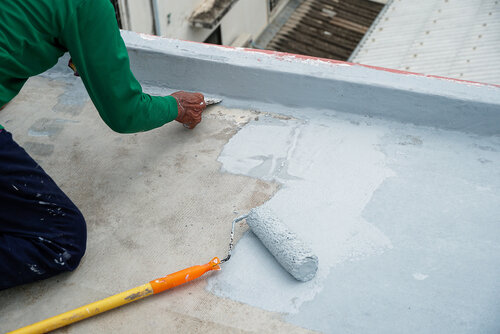Everybody dreams of one day owning their house and seeing the foundation being laid. What if your foundation was flooded with water because of bad waterproofing?
This weakens the entire structure of the home, which can cause problems over time and affect the lifespan of the construction. This blog provides a comprehensive guide on how to waterproof your home using different types of waterproofing.
This guide will help you to choose the right Bathroom Waterproofing in Melbourne type for each part of your home and the best waterproofing method for your house.
Waterproofing Different Parts of Your House
1. Waterproofing of Foundations
The worst thing to happen to your home is a problem with the foundation. The foundation is the base of your house and it can be a disaster if you have a problem. The main source of the water in the foundation comes from underground water. The foundation is mainly waterproofed by the concrete. You just have to ensure that the wall is made correctly and is of high quality. Any cracks can cause the foundation to be filled with water, causing damage to the house over time.
2. Roof/Terrace
It can be difficult to waterproof terraces and rooftops because they are mostly flat with no slope to allow water to drain. If you don’t waterproof a certain area, water can cause serious damage to the house.
Two common membranes can be used to waterproof the roof or terrace.
- Sheet-based membrane
- liquid membrane.
Sheet membrane waterproofing is recommended as these materials are laid out in a continuous manner over flat surfaces. The membranes are continuous, preventing any water seepage.
Torch-on Membrane proofing is a type sheet membrane which comes in large rolls. It is made from bitumen (a crude oil-based hydrocarbon) and asphalt. Asphalt can be either rubber-modified Styrene Butadiene Styrene, also known as SBS, or plastic-modified Atactic Polypropylene Plastic.
The membrane can be heated and applied to a flat surface.
Both APP and SBS applications have pros and cons.
- Easy installation, quick heating and durable.
- SBS – longer life, greater flexibility; requires more time to heat and install
Torch membranes are non-toxic, and they are used mainly in the market for waterproofing Sydney.
3. Basement
Tanking your basement is the most common way to waterproof it.
Mastic Asphalt is the most common material for tanking basements. Other types of bituminous products are sometimes used.
4. Kitchen and Bathroom Waterproofing
The most effective method to waterproof bathrooms and kitchens is cementitious waterproofing. This is because it works best in areas that are wet.
The cementitious waterproofing supplies are readily available and can be mixed and applied by the suppliers. It is a rigid, semi-flexible waterproofing method. However, because it is applied only to interior wet areas, such as kitchens and bathrooms, and does not receive direct sunlight, or face any other weather conditions, it will not contract or expand.
5. Swimming Pool and Garden
Swimming pools are a wonderful addition to any garden. Most people don’t build one, because they are afraid of the damage that will occur over time from the chlorine. You must make your pools waterproof if you want them to last. It is important to consider the water when building your pool. It is advised to use epoxy-cement to waterproof your pool. This will create a barrier that can withstand the pressure of flowing water. It is important to protect buildings against water damage. To protect the entire surface of swimming pools, ponds and horizontal surfaces it is important to waterproof both.
6. Waterproofing the Areas of Houses that have Wiring for Electricity
It is important to waterproof the areas where electricity wires are located, because water can cause a short circuit and ignite a house fire. It is because of this that the waterproofing of wires became more popular in the 2000s. People now understand the importance of waterproofing wiring. Sydney is a speciality of the waterproofing company for waterproofing homes in Sydney.

